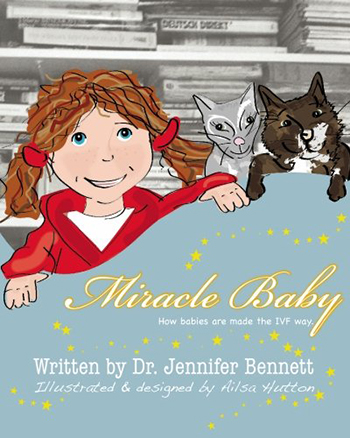By Kate Weldon LeBlanc
 At bedtime on my daughter’s ninth birthday, she asked me to explain how babies are made. I think it was just a coincidence that it was on her birthday, but the timing did make the conversation even more meaningful. This was the most pointed time she had ever asked about conception. In the past, she said things like “how did I get in your belly? Did you eat me?”. Frankly, I wasn’t ready for “the talk” so it was easy to just answer silly questions in a silly way. We knew we wanted to talk to her about sex and also about how she was conceived–in-vitro fertilization. But she had not ever seriously asked about how babies are made the “old fashioned way”, and I felt this needed to happen before we talked about IVF. For a long time we have used the biological terms for body parts, but otherwise we have discussed “conception” with broad themes that felt age appropriate. For example, “We wanted so badly to be parents, but it took longer and was more difficult that we expected. That’s why we were so very excited when Mommy got pregnant.” “Now Mommy helps other people who are having a tough time becoming parents.”
At bedtime on my daughter’s ninth birthday, she asked me to explain how babies are made. I think it was just a coincidence that it was on her birthday, but the timing did make the conversation even more meaningful. This was the most pointed time she had ever asked about conception. In the past, she said things like “how did I get in your belly? Did you eat me?”. Frankly, I wasn’t ready for “the talk” so it was easy to just answer silly questions in a silly way. We knew we wanted to talk to her about sex and also about how she was conceived–in-vitro fertilization. But she had not ever seriously asked about how babies are made the “old fashioned way”, and I felt this needed to happen before we talked about IVF. For a long time we have used the biological terms for body parts, but otherwise we have discussed “conception” with broad themes that felt age appropriate. For example, “We wanted so badly to be parents, but it took longer and was more difficult that we expected. That’s why we were so very excited when Mommy got pregnant.” “Now Mommy helps other people who are having a tough time becoming parents.”
But now here was my daughter, a newly minted tween, looking up at me with a (gulp) mature, expectant face, and I could tell it was the right time for us. I shared some of the words–maybe clumsily–that I had planned to use to explain sex and IVF, which went well (I think). But fortunately, I also had read about some of the children’s books that are available to explain babies that are “works of ART” (assisted reproductive technology) and other wonderful paths to parenthood, including adoption. I had one such book, Miracle Baby, at my side.
It goes without saying that every family is–wonderfully, beautifully–unique. So in this post, I am just sharing our experience. This book worked very well for us. Perhaps this was helped by the fact that the characters are a heterosexual, Caucasian couple with one daughter conceived through IVF–like our family. However, I think Miracle Baby would be beneficial to many families. It explained both sex and IVF in ways that I felt were developmentally appropriate for children preschool age through elementary school. The book is meant to be read together, as we did, especially because it includes some lovely prompts for discussion. Like “Have you ever had to wait and wait for something you wanted so badly?”. And my daughter liked how the family’s cats Salt and Pepper play a central role in the story.
Perhaps the best “review” of Miracle Baby is from my miracle “baby” herself. After we read it once, my daughter said, “Please read it again!”.
